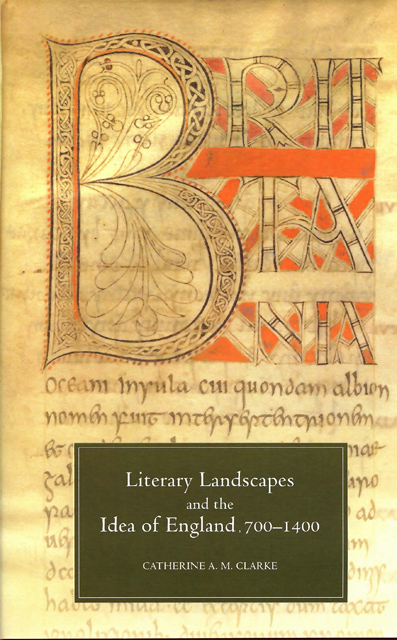Book contents
- Frontmatter
- Dedication
- Contents
- Acknowledgements
- Abbreviations
- Introduction
- Chapter One The Edenic Island
- Chapter Two Re-making the locus amoenus in Anglo-Saxon England
- Chapter Three Local Landscapes as Mirrors for England
- Chapter Four The Delightful City
- Epilogue: Disruptions and Continuities
- Bibliography
- Index
Epilogue: Disruptions and Continuities
Published online by Cambridge University Press: 28 February 2024
- Frontmatter
- Dedication
- Contents
- Acknowledgements
- Abbreviations
- Introduction
- Chapter One The Edenic Island
- Chapter Two Re-making the locus amoenus in Anglo-Saxon England
- Chapter Three Local Landscapes as Mirrors for England
- Chapter Four The Delightful City
- Epilogue: Disruptions and Continuities
- Bibliography
- Index
Summary
This study has traced continuities and traditions through medieval English literary representations of ideal, symbolic landscapes and their association with ideas of England. Certain images have emerged as central: the Edenic island with its perfect enclosure, the green pastoral landscape and its paradisal resonances, and the potentially symbolic space of the city as a parallel locus amoenus. Particular ideologies and literary strategies have also emerged repeatedly in the periods and texts examined by the study. Through descriptions of English landscapes in terms which recall Eden, Paradise or the Promised Land (or the cities of Jerusalem, Rome or Troy), England appropriates a powerful cultural heritage – and destiny – which encompasses spiritual and classical authority and prestige. Yet the centrality of biblical and classical models and Latin literary conventions to these formulations of English landscape and identity raises a central tension: the dependence of these ideas of Englishness on cultural appropriation or usurpation.
Alongside evidence of continuities and intertextualities, this study has also explored the re-appropriations, re-directions and reactions inherent to any literary tradition. By focusing on selected texts in their contexts, chapters have examined the specific uses of traditional imagery and ideas in specific cultural contexts and by specific authors, audiences or communities. Bede's description of ‘Albion’ in the Ecclesiastical History works to persuade us of its newness and originatory status, the tenth-century Benedictine reformers appropriate pastoral imagery and the prestige of Latin literary tradition to support their ‘new’ English religious and cultural ambitions, and monastic houses in the twelfth and thirteenth centuries claim the tropes of idealised, symbolic landscape in a re-invention of local identity and relevance.
This final section will suggest some further continuities and connections which move beyond the main scope of this study, making links with texts outside the period covered here and with other areas of literary and cultural studies. This section will also acknowledge some discontinuities and disruptions to the representational and ideological tradition for which this study has argued. In particular, it will examine how the image of England as delightful pastoral island is problematised or subverted by medieval English writers conscious of internal conflict and division.
- Type
- Chapter
- Information
- Literary Landscapes and the Idea of England, 700–1400 , pp. 130 - 140Publisher: Boydell & BrewerPrint publication year: 2006

